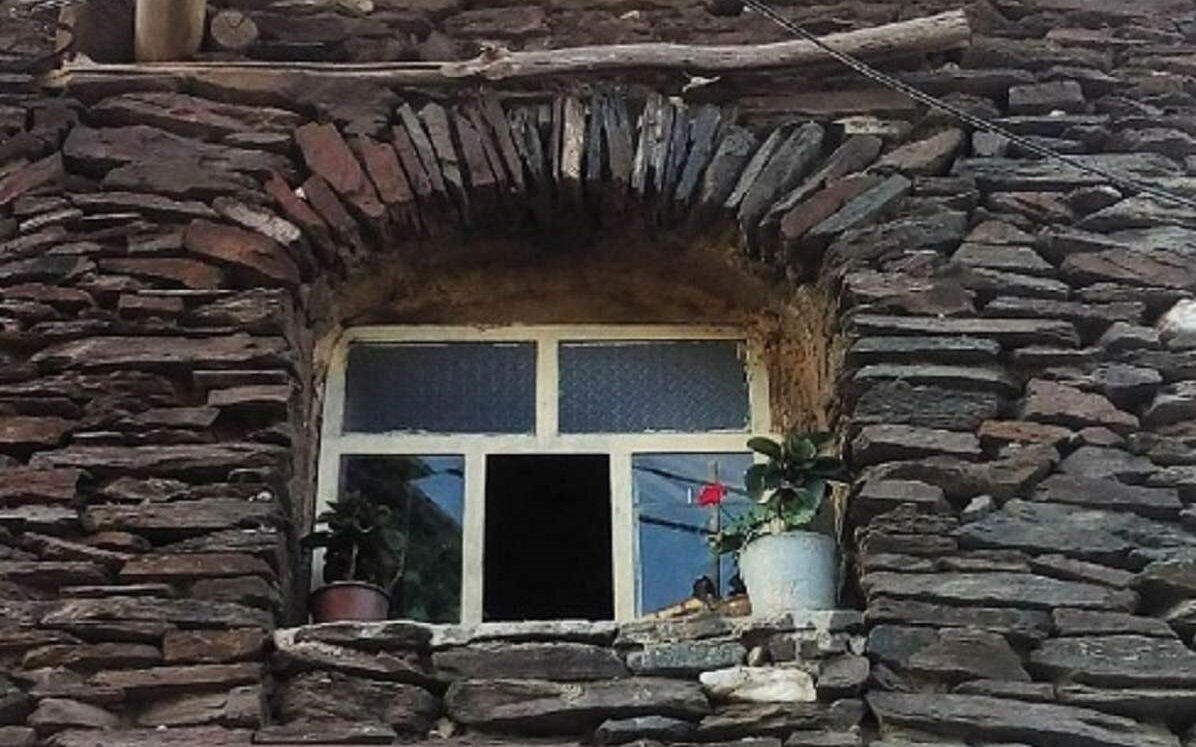Varkaneh Village, stone homes & natural beauty await

TEHRAN -- When you step into the village of Varkaneh, you may feel a fundamental difference because its houses, streets, and everything else are made and adorned with stone.
Nestled on the slopes of Alvand Mountain, Varkaneh Village is situated in the southern region of the central Zagros Mountain Range, east of the Arzanfard River, just 20 kilometers southeast of Hamedan.
The name Varkaneh is derived from “Var” or “Bar,” meaning “near” or “next to,” and “Kaneh,” which signifies “water spring,” collectively translating to “next to spring.” With a history dating back four centuries to the Safavid era, this village has earned its place on the list of Iran’s National Heritages.
According to Visit Iran, the majority of houses in the village are strategically positioned to benefit from southern sunlight. The first floor typically houses storage and stables, while the living quarters, including rooms, an Ivan, and a staircase, are located on the upper floor. The houses feature short-height rooms, with roofs made of wooden boards or thatch.
Broken houses often incorporate a corridor design (Dalan and Hashti). The construction materials, including stone, adobe, and brick, with an emphasis on stone, reflect an environmentally friendly and green architectural approach.
Perched at an altitude of 2250 meters above sea level amidst the mountains, Varkaneh is bordered by Shamsabad village and Aliabad village to the north, Sardarreh Mountain to the northeast, Simin and Abroo village to the west, Sorkh Belaq Mountain to the southwest, Qara Dag Mountain to the east, and Barani Valley and Qeshlaq Valley to the south and southeast. Varkaneh Village, situated in the Quaternary Formation, features granite, shale, and schist rocks, tracing its geological origins back to the Mesozoic and Jurassic periods, up to 160 million years ago.
The village’s original foundation is centered around a series of qanats (subterranean aqueducts). Narrow alleys and closely knit houses with stone walls provide protection against the mountainous terrain, the locally named Isfahani Wind, and the sub-zero winter temperatures. Varkaneh exhibits four types of houses: long, broken, bent, and those with a Miansara (yard).
The residents of Varkaneh primarily engage in agriculture, animal husbandry, and handicrafts. Crops such as wheat, barley, peas, beans, potatoes, walnuts, pomegranates, apricots, and apples flourish in Varkaneh. Animal husbandry yields by-products such as meat, wool, and milk products.
Culinary delights such as Abgusht, various kebabs, and Ash dishes like Omaj, Petela, Vareh, Barely, and Tarkhineh are prepared in Varkaneh. The village serves as a migratory route for Qezel Yusef, Yarem Taghloo, and Varkani nomads who commence their migration every October. Notably, horse breeding stands out as one of the village’s key characteristics.
Rural tourism
Rural tourism as well as agritourism and farm stays can be regarded as a win-win both for local communities and post-modern travelers who are tracking unique experiences. Sightseers may stay with a rural or nomadic family for a while or enjoy an independent stay and assist them with day-to-day life. It also opens up an opportunity to feel rustic routines, agriculture, traditions, arts, and culture.
That tourism branch, most of all, sets the ground for economic development in rural areas by creating additional income and employment. It can also improve the social well-being in rural areas, for instance by stimulating improvements in infrastructure, sanitation, and electricity networks.
As mentioned by The World Tourism Organization (UNWTO), rural tourism is a type of activity in which a visitor’s experience is related to a wide range of products generally linked to nature-based activities, agriculture, rural lifestyle, culture, angling, and sightseeing. Such tourism also possesses characteristics such as low population density, a landscape dominated by agriculture and forestry, as well as traditional social structure and lifestyle.
The UN body aims to turn the spotlight on the “uniqueness” of each village to make tourism a means for further development in rural areas. “We want to recognize the uniqueness of each village and showcase the best initiatives to make tourism a means for a better future in rural areas. As we restart tourism, we work to ensure that we leave no one - and no village- behind,” according to UNWTO Secretary-General Zurab Pololikashvili.
AFM
Leave a Comment